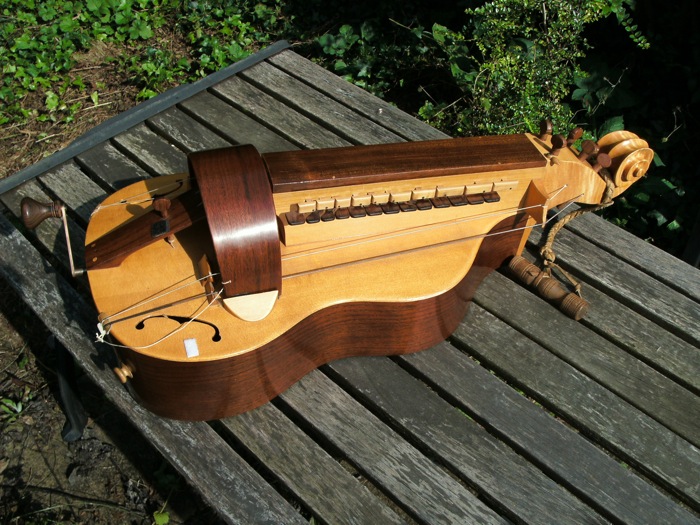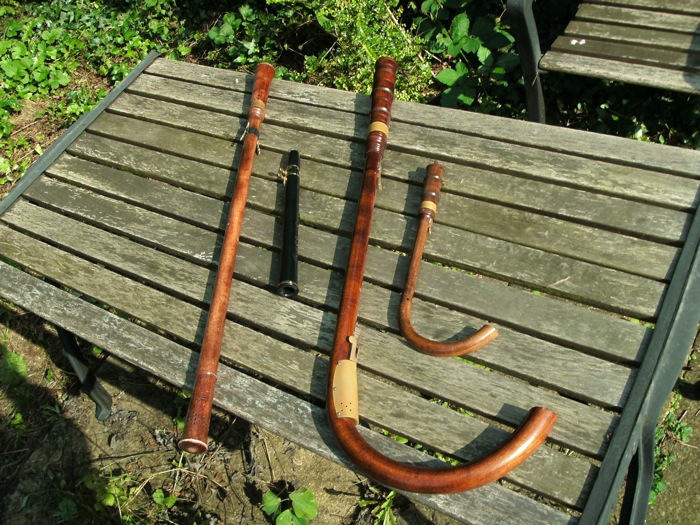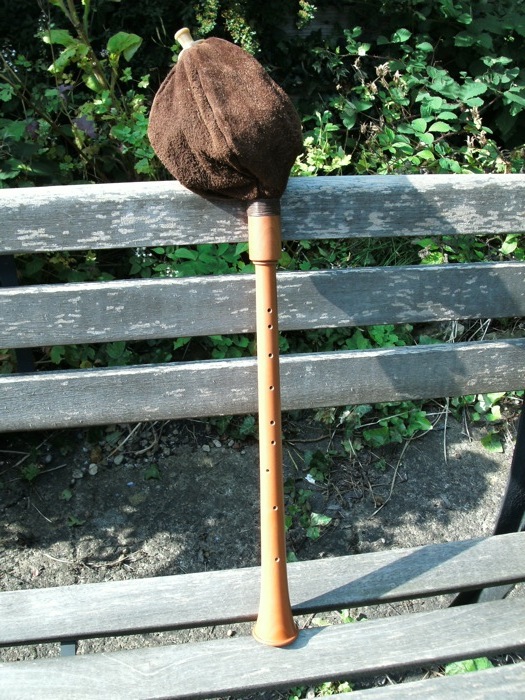I like instruments and have somewhat of a menagerie. Here are some of the less embarrassing inmates.
Squeezeboxes
Here is a Castagnari Lilly. It’s a small, single-voice D/G melodeon. Because of its size and the fact it has one reed per note, the reeds are mounted directly on the board rather than in a reed-block. It sounds a bit like a concertina. The buttons are much smaller than a normal melodeon so it’s easier to play fiddly things.

Here’s a Dino Baffetti (I don’t know what model). It has two reeds per note and is tuned quite richly. The basses are very deep and the B is below the C (in contrast to the Lily). The positioning of the B makes a surprising difference. Internally, it looks like the manufacturer made it up as they went along! Feels cheaper than the Lily but is much more fun to play.

Here’s a Jackie, a concertina made by Concertina Connection, English tuning. It’s probably the minimum you could get away with and still legally be able to call it a concertina. Black and plasticky, but works.

Here’s a Hohner Verdi II accordion. It has five stops in with three sets of reeds in the right hand and three stops in the left. It’s a 96-bass accordion and weighs quite a lot, and has earned the nickname ‘JCB’. Nice for chords and obscure notes like E flat. Made in Switzerland, probably around the 60s.

Strings
Here is a Hurdy Gurdy, made by Martin Turner. Still getting to grips with it. The two drones closest are tuned to D below middle C and the G below that. Two drones on the other side are tuned to D above middle C and E. I’ve got both melody strings tuned to unison D. The keyboard is chromatic (similar to a piano keyboard). The instrument is either tuned to G major (with D as the bottom note) or D mixolydian depending on how you look at it.

Wind
From left to right:
- A Cornamuse in C: a Renaissance-style windcap instrument (there’s a double reed inside the top section). It has a narrow parallel bore and is very quiet. The end of the instrument is actually half-closed, which shapes the sound. As the bore is so narrow, there isn’t actually any air-flow at the end of the instrument. Makes a sweet buzzing sound that. Completely inaudible in a pub.
- A Mai Xaphoon ‘Pocket Sax’ in C. A plastic single-reed instrument. The mouthpiece is somewhere between a clarinet and a sax. It takes tenor sax reeds and uses a sax ligature. The fingering is completely bizarre: the instrument is in C but an open fingering produces a B-flat at the seventh position and the thumb-hole is part of the scale (not an octave-hole). Makes a sax-like sound with a timbre that belies its sound. Quite wide-bore with a slight flare.
- Two guests: a bass and soprano Crummhorn, on loan from a friend. These are just like Cornamusen except for the crook and the wider, more conical bore, and open at the end. A buzzy but cleaner sound. The bass takes some work to make a convincing sound and the soprano is tremendous fun to play.

And a ahem Bladder Pipe, made by Pavel Cip in the Czech Republic. It’s a precursor to a bagpipe. You blow into the bladder (made of leather, but in mediaeval times made of something quite different) and somehow keep a steady air-flow by maintaining pressure in the bag whilst you breathe occasionally. It’s pitched in C and is fingered like a recorder. An incredibly loud beast, completely impossible to practice without earplugs and a fully detached house.
